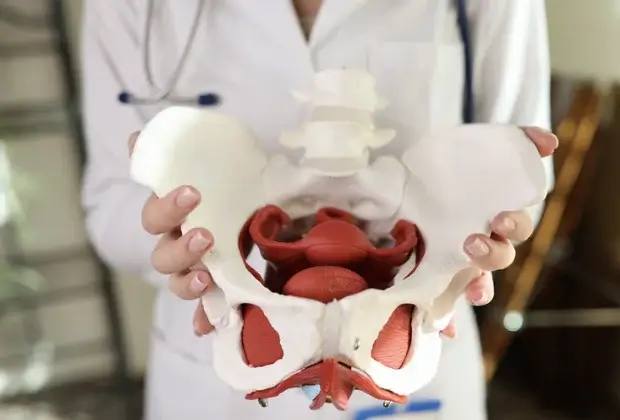First… what is vaginal dsybiosis?
Characteristics of a balanced vaginal microbiome include:
- High % of Lactobacillus [good bacteria].
- Low bacterial diversity [number of different bacterial species].
- Low % of pathogenic bacteria [bad bacteria].
Characteristics of vaginal microbiome dsybiosis include:
- Low % of Lactobacillus [good bacteria].
- High bacterial diversity [number of different bacterial species].
- High % of pathogenic bacteria [bad bacteria].
- INFECTION & INFLAMMATION
Lower % of Lactobacillus species promotes inflammation & is associated with higher infection risk. Continued inflammation in the vaginal environment is of course likely to have an impact on pelvic floor muscles, inc. the development of PID [pelvic inflammatory disease].
E.g. a 2023 study, found those with prolapse were most likely to have CST IV, which is characterised by low % of Lactobacillus & increased bacterial diversity.
2.. URINARY & VAGINAL INTERPLAY
Komesu et al. (2020) found there to be significant correlation between urinary microbiota & vaginal microbiota.
These therefore interact to influence both urinary and reproductive health – both of which are crucial to pelvic health.
3. % OF LACTOBACILLUS BACTERIA
Lower % of Lactobacillus in the vaginal microbiome have been linked to impaired pelvic floor muscles (Geng et al. 2020).
4. PELVIC ANATOMY
Changes to the anatomy via weakened pelvic floor muscles have been shown to negatively impact the vaginal microbiome.
Reduced pelvic floor function can result in a reduction in % of Lactobacillus present in the vaginal microbiome, and an increase in bacterial diversity [both symptoms of vaginal dsybiosis].
Conclusion
There are multiple ways in which pelvic health and vaginal microbiomes influence & are influenced by each other.
This relationship is very complex, & still requires much research, however it is not unreasonable to assume that by optimising these interacting areas, you will reap the health and wellness benefits throughout your whole body!






